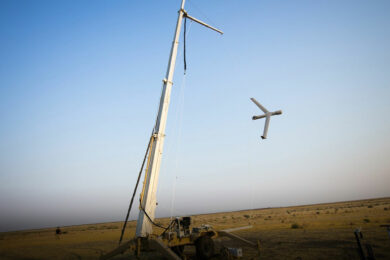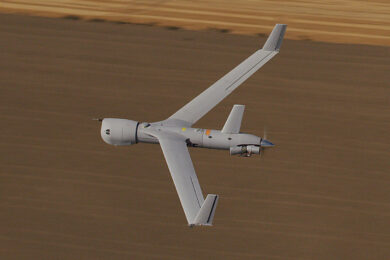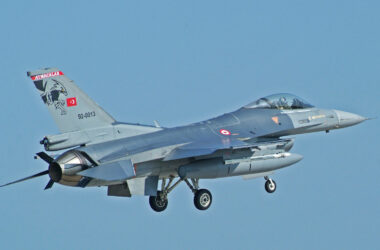The Brazilian Navy performed the first launch of the ScanEagle aircraft, a surveillance and reconnaissance “drone” provided by Insitu, a Boeing subsidiary.
The unmanned vehicle was received in the country in March and had the first test carried out by the Navy at the São Pedro da Aldeia Naval Air Base, in Rio de Janeiro.
To operate the SARP-E (Embedded Remotely Piloted Aircraft System), the Navy created in 2021 the 1st Clarification Remotely Piloted Aircraft Squadron (EsqdQE-1), which is subordinated to the Naval Air Force Command.
The ScanEagle was developed at the beginning of the last decade at the request of the US Marines, which have been using the aircraft since 2004. Light in weight and compact in size, the air vehicle is launched by a catapult and retracted by means of an aerial hook mechanism.
It has a wingspan of 3.1 meters, a length of 1.67 m and a maximum take-off weight of 23.4 kg. The maximum payload is 3.4 kg and the ScanEagle can remain in flight for up to 20 hours and reach an altitude of 19,500 feet (5,943 meters).
The maximum range is 100 km, depending on the type of antenna used and the control center link. The aircraft’s cruising speed is about 110 km/h.
The Navy’s plan is to expand the capabilities of its vessels in reconnaissance, surveillance and search and rescue missions. Initially, the force purchased five systems from the manufacturer.
#AviaçãoNaval O 1º Esquadrão de Aeronaves Remotamente Pilotadas fez o primeiro lançamento da aeronave ScanEagle na Base Aérea Naval de São Pedro da Aldeia-RJ. O meio realizará atividades de inteligência, vigilância e reconhecimento, ampliando a capacidade operativa do #PoderNaval pic.twitter.com/cDrgQ7bSHG
— Marinha do Brasil (@marmilbr) June 28, 2022








